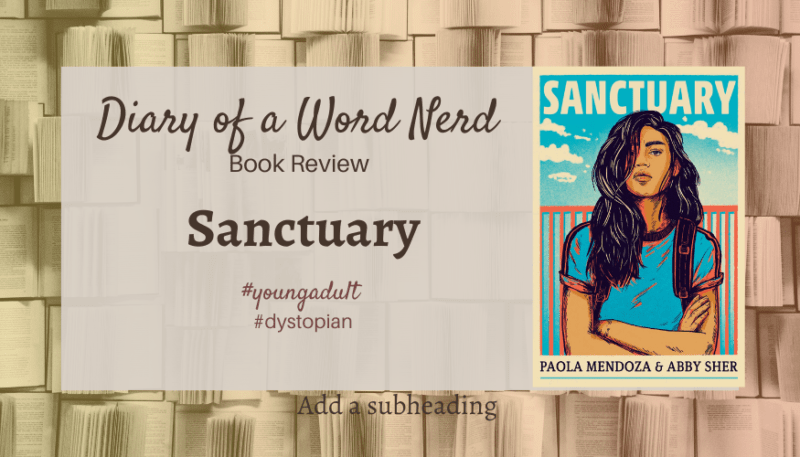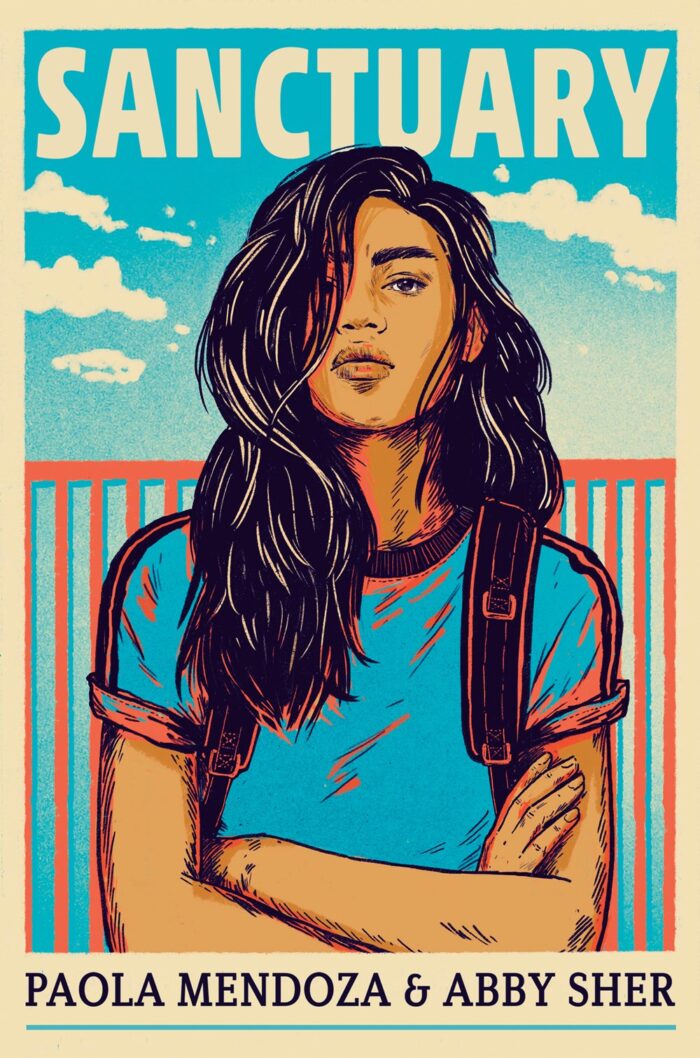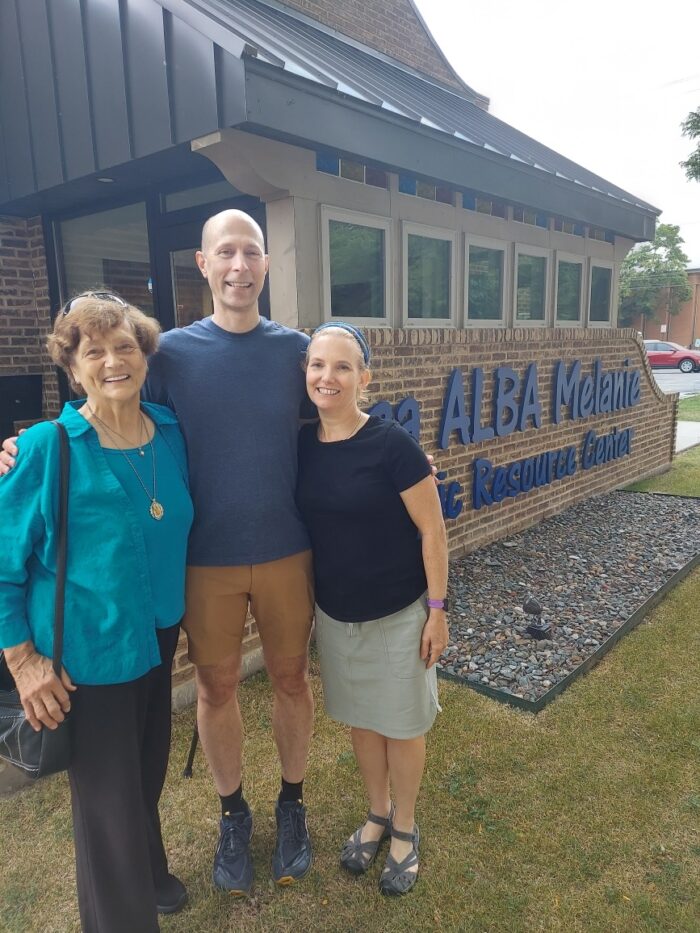I read books, fiction and non-fiction, to understand this world better. Lately, I’ve been thinking a lot about immigration and the complicated policies and problems around it. To learn more about, I recently read Sanctuary, written by Paula Mendoza and Abby Sher. Since today kicks off National Hispanic Heritage Month, I thought I’d do my part to promote awareness of Hispanic culture. National Hispanic Heritage month runs every year from September 15 to October 15.
Premise
Sanctuary tells the story of 16 year old Vali, her little brother, and their desperate journey to find a safe place to live. The story takes place in a future United States where the President speaks to the public at random via hologram, and all documented citizens have scannable chips implanted in their wrists. Vali’s family immigrated to Vermont, USA to escape war and corruption. They do not have documentation, and in the recent past, Vali’s father was discovered, deported, and murdered in his home country.
As anti immigrant policy escalates, Vali’s mother prepares to move the family from Vermont across the country to California to live with Vali’s aunt, her Tia Luna. But the trip will be fraught with danger. Vali’s little brother, born in the US, has a valid citizen chip implanted in his wrist. Vali and her mother have fake chips that sometimes work and sometimes don’t. Undocumented citizens found via chip scan are vulnerable to physical and sexual abuse, brutal forced labor, and death. When Vali’s mother fails to pass a chip scan at a bus station, she urges her children to run without her. Vali and her brother must travel alone to California with hardly any food and the Deportation Forces following close behind.
What I liked
Although it is set in a future dystopian world, the themes of Sanctuary feel real and concerning. I can see how, gone unchecked, current anti immigrant fear and propaganda could lead America into a future like the one imagined by Sanctuary‘s authors, activist Paola Mendoza and YA author Abby Sher. Reading Vali’s story made me more empathetic to the plight and fear of undocumented immigrants and how unwelcoming our country could feel. The themes and characters of Sanctuary reminded me a lot of Octavia Butler’s Parable of the Sower, and I would describe Sanctuary as a YA parallel of Butler’s work. Sanctuary has some violence, but not as much as Parable of the Sower. The prose is not nearly as beautiful as Butler’s, however.
Vali is a compelling main character. She repeatedly demonstrates courage and initiative as she leads herself and her brother on a dangerous journey. She drove me to keep reading the book, and I wanted to see her finish her mission successfully.
What I didn’t like
The writing is basic and put me off initially. I almost set the book down because I found the prose clunky and uninspired. But the plot picked up, and I got pulled into the journey of Vali and her desperate struggle to find safety. It was a quick read.
Word Nerd Recommendation
While the writing of Sanctuary isn’t stellar, the themes and perspectives it offers makes it a worthwhile read, especially for teens and those interested in understanding more about the multifaceted issues surrounding immigration. Sanctuary put me into the worn, dirty shoes of Vali and people like her. The novel made me realize just how unsafe and undervalued immigrants might feel in our country, even today.
Sanctuary has mild violence, including scenes of children being shot and an attempted rape.
I read Sanctuary before visiting my (husband’s) great aunt Melanie in Green Bay, Wisconsin. She’s a retired Catholic nun who has dedicated years of her life to helping the Hispanic community in Green Bay. In 2012, Melanie helped establish a resource center for Hispanics called Casa ALBA Melanie. Casa ALBA roughly translates from Spanish to “House of New Hope”. Alba means “dawn.” It also is an acronym for Association for Latino Well-Being and Assistance.”
Casa ALBA helps Hispanics find health care, offers a preschool or “escuelita” for young children, and provides legal advice, among many other things. Speaking with Melanie and the Hispanics who work so hard to support their community deepened my understanding of the challenges immigrants face. It also filled me with hope that we can work together to find viable solutions. The tagline for Casa Alba is “Love Lives Here.” What a wonderful antidote to the fear and hate described in Sanctuary.
Have you read Sanctuary? What did you think? Can you recommend other books that explore issues related to immigration?
Thanks for getting nerdy with me!





I had to read this book for school. IT IS AMAZING!!
Great to hear, and I’m glad you liked it. 🙂